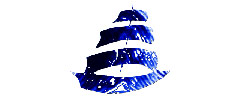Clarence lies on a sandy seabed in 4 to 5 meters of water. The area has seagrass beds around, but not on, the wrecksite. On a day with good water visibility, the wreck is clearly visible from the surface.
The outline of the vessel is clear apart from the starboard side of the stern which is buried. The port side of the ship from bow to stern, and from keel to deck level is almost complete. The paired frames used as the framework for the hull can be seen sticking out of the sand and outline the shape of the ship. At the time of its wrecking, Clarence was used to transport sheep. Part of the Baltic pine decking used to accommodate the animals can be seen at the stern. Some very fragile pieces of leather and rope have been found at the wreck site. Other artifacts which have been discovered include a small glass deck light, ceramics and the ship’s compass.
It is clear that the sand cover on the wreck has decreased and the plinth side is more exposed than previously recorded. During recent visits to the site remains of the artificial sea-grass matting (torn up by anchors soon after placement around 1993) were clearly visible in the centre of the wreck, as were pieces of copper sheathing and a brown glass bottle. Part of the copper-alloy gudgeon could also be seen at the stern of the wreck.


















